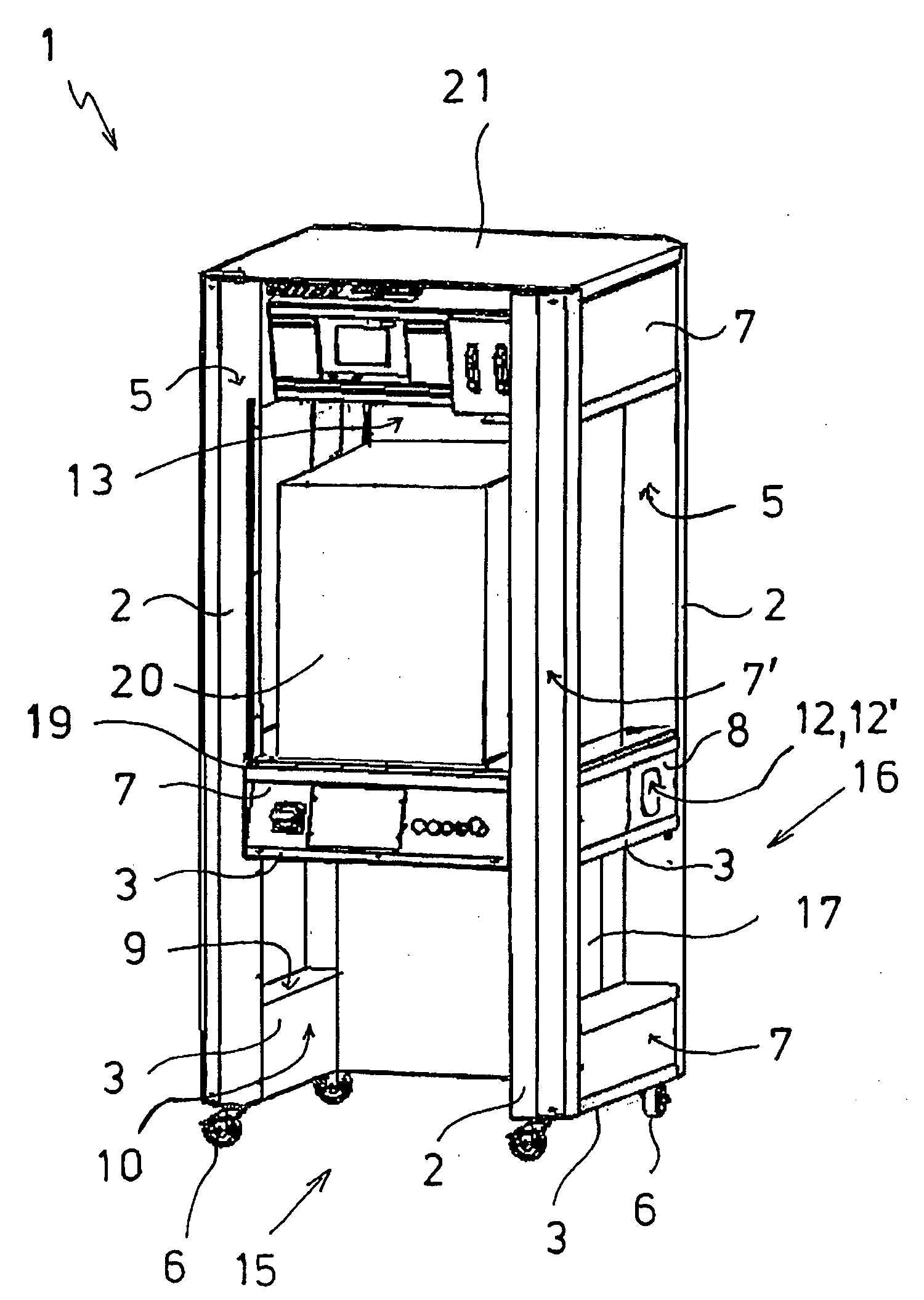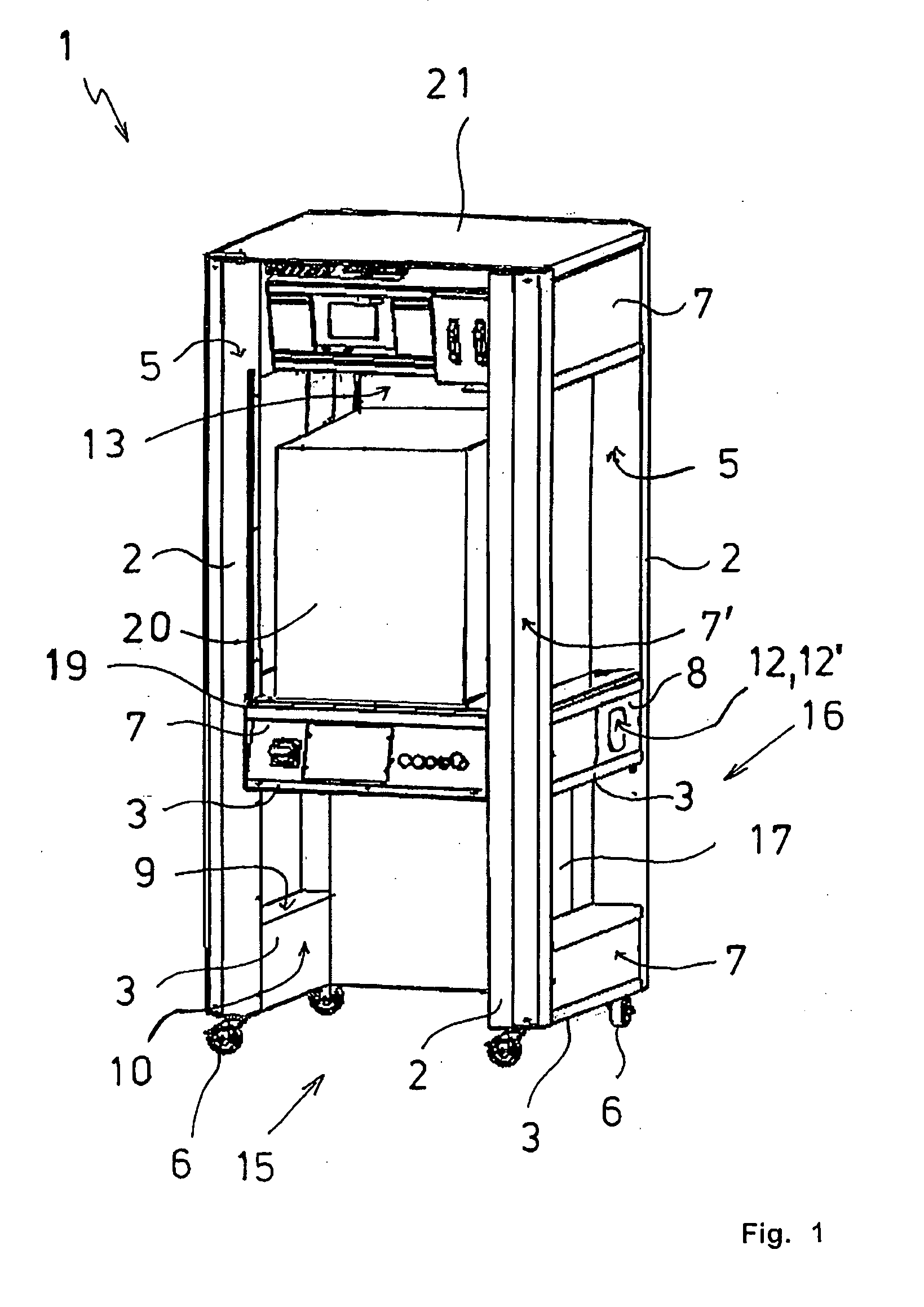Rack for a test cell
a test cell and rack technology, applied in the field of racks for test cells, can solve the problems of not meeting the high requirements of a test cell regarding ease of operation, the line arrangement often does not comply with safety standards, etc., and achieves the effects of simple and quick, high rigidity, and flexible interior spa
- Summary
- Abstract
- Description
- Claims
- Application Information
AI Technical Summary
Benefits of technology
Problems solved by technology
Method used
Image
Examples
Embodiment Construction
[0022]The rack 1 according to the invention for a test cell shown in FIGS. 1, 2 comprises four vertical posts 2 as corner posts and one or several crossbars 3, 3′ on each side that are located between the corner posts 2. At their ends 4, the crossbars 3, 3′ are connected non-permanently with side walls 5 of the corner posts 2 by means of bolts and nuts (not shown). The rack 1 is supported by rollers mounted at the bottom of the corner posts 2. The corner posts 2 and the crossbars 3, 3′ consist of box sections that are open towards the outside, forming cable channels, and are closed by means of removable covers 7, 7′.
[0023]The corner posts 2 and the crossbars 3, 3′ are structural components of a modular system. For this purpose, the dimensions of the posts 2 and of the crossbars 3, 3′ as well as the associated covers 7, 7′ are standardized. Their standard lengths are based on standardized dimensions for common industrial housing sizes of electrical devices.
[0024]At their ends, the bo...
PUM
 Login to View More
Login to View More Abstract
Description
Claims
Application Information
 Login to View More
Login to View More - R&D
- Intellectual Property
- Life Sciences
- Materials
- Tech Scout
- Unparalleled Data Quality
- Higher Quality Content
- 60% Fewer Hallucinations
Browse by: Latest US Patents, China's latest patents, Technical Efficacy Thesaurus, Application Domain, Technology Topic, Popular Technical Reports.
© 2025 PatSnap. All rights reserved.Legal|Privacy policy|Modern Slavery Act Transparency Statement|Sitemap|About US| Contact US: help@patsnap.com



